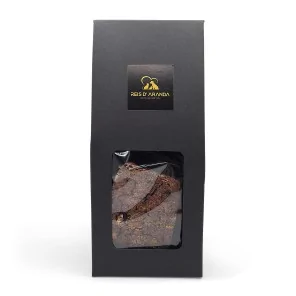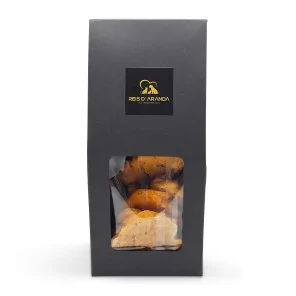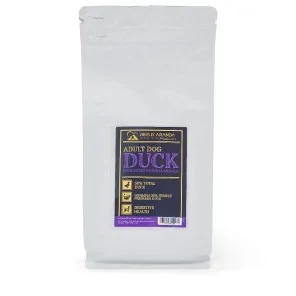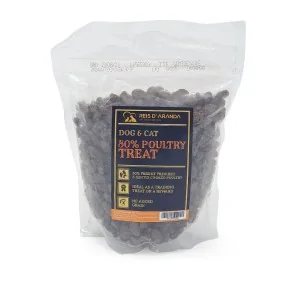The Tornjak originated from genetically homogeneous, almost extinct, indigenous shepherd dogs. These dogs have...
THE PUMI
INTRODUCTION
The pumi is a small to medium sized breed of dog originating in Hungary. They are herding dogs capable of herding and working close to farm livestock, especially sheep, to keep them under control.
THE ORIGIN OF THE PUMI
The Pumi is a dog originating in Hungary, which appeared between the 17th and 18th centuries from the crossing of the primitive Puli with terrier-type dogs of German and French origin. Originally, it was conceived as a fast, fearless sheep herder, capable of moving flocks across the pastures of western Hungary.
The Fédération Cynologique Internationale recognised the Pumi as a breed in 1954, including it in Group I (Sheepdogs and Cattle Dogs), Section I (Sheepdogs). Today, it is a rare breed outside Hungary, although in Sweden and Finland it is a relatively commonly used dog in Agility.
THE PUMI STANDARD
GENERAL APPEARANCE: A medium sized, terrier-like sheepdog with a happy temperament. The terrier appearance is most noticeable in the head. The facial region is elongated and the upper third of the ears, which are erect, drooping forward. The construction of the body is square.
The neck carriage is higher than usual due to his constant state of attention. The coat is of medium length, wavy and curly. The Pumi may be of various colours but always of one solid colour.
IMPORTANT PROPORTIONS
- The length of the body is equal to the height at the withers.
- Depth of chest is slightly less than half the height at withers.
- The length of the muzzle is slightly less than half the length of the head.
- The length of the neck is equal to the length of the head and is in turn 45% of the height at the withers.
HEAD: Relatively long and narrow. The shape of the head is marked by the extended muzzle.
CRANIAL REGION
CRANIAL: The crown of the head is relatively broad and domed. The long forehead is slightly domed, seen in profile it is flat. The supraciliary arches are moderately developed.
STOP: Hardly perceptible. The surface of the forehead runs between the orbital arches passing them lengthwise and continuing into the bridge of the nose.
FACIAL REGION
TRUFA: Narrow, with blunt edges and black in all varieties of the coat.
HOCIO: The muzzle is straight. The extended facial region tapers towards the nose but will never be pointed.
BELPHOS: Adherent to the bite, dark pigmented.
JAWS / TEETH : Powerful jaws. Teeth strong and well developed white. Even, in accordance with the dog's dental formula and with a complete scissor bite.
CHEEKS: Well muscled.
EYES: Medium distance apart and set slightly obliquely, of medium size, oval, slanting, dark brown in colour. The gaze is lively and intelligent. The rims of the eyelids rest firmly on the eyeball and are well pigmented.
EARS: The ears are erect and set on high. The upper third is folded forward. They are of medium size, symmetrical and inverted V-shaped. Their movements are active.
NECK: Of medium length, slightly arched and well muscled. It is positioned at an angle of between 50° and 55° to the horizontal. The skin of the neck is firm, dry, without wrinkles.
BODY: The musculature is well developed, dry, particularly firm and resistant. The breed is extremely lean and harmonious in appearance.
UPPER LINE: Straight.
CROSS: Well defined, long and sloping to the rear.
BACK: Straight, short and firm.
LOIN: Short, firmly attached, straight.
Croup: Short, slightly sloping, of medium width.
CHEST: The front of the chest is flat, not broad, rather deep. The ribs are slightly sprung, rather flat. The ribcage is long, deep, reaching to the level of the elbows.
BOTTOM LINE : Firm, tucked up towards the rear.
TAIL: Set on high, forming a wide circular curve over the croup. The hair on the underside of the tail is between 7 cm and 12 cm long, wiry, open, with little undercoat. Dogs born anuran and dogs with docked tails are not permitted.
LIMBS
FOREQUARTERS: Seen from the front, the forelegs support the body like columns, straight, parallel and not too wide apart.
Shoulders: The scapula bone is long and slightly sloping. The angle to the horizontal is approximately 55 degrees. The upper points of the shoulder blades are in a vertical line with the deepest point of the thorax.
Upper arm: Short and muscular. The shoulder blade and upper arm form an angle of 100 to 110 degrees.
ELBOW: Well laid back close to the body.
FOREARM: Long, wiry.
Pastern: Steep.
HANDS: Cat feet, round, with toes close together. Pads springy, nails strong, black or slate grey.
HINDQUARTERS : The hindquarters are very powerful. Seen from the side, they are slightly stretched backwards. Seen from behind they are parallel, straight, neither too close together nor too wide apart.
Upper thigh: Muscled, long and sloping backwards.
KNEE: At the same height as the elbows.
LEG: Long, lean.
HIP: Wiry and sharply defined.
METATARSE: Short and steep.
FEET: Like the forefeet. Dewclaws undesirable.
GAIT / MOVEMENT: Movement really lively and full of temperament. Short, energetic, dynamic and harmonious gait. The carriage is bold and proud. The trot is light and harmonious, the dog places his hind feet exactly in the tracks left by the front feet.
SKIN: Without wrinkles, strongly pigmented. The hairless areas are black or slate grey.
COAT :
HAIR: The wavy and curly coat forms tufts and is never straight or corded. The average length of the hairs is 4 to 7 cm ; gathered in larger or smaller tufts, the coat is elastic, shaggy and dense. The coat consists of a wiry, strong but not coarse outer coat and a soft undercoat. The ear hairs point upwards, are wiry, coarse, of medium length and dense. The eyes and muzzle are free of long hairs. The desired coat preparation is achieved by trimming by hand. Small corrections can be made with scissors on the head and limbs. A coat prepared entirely with scissors is not desirable.
COLOUR
- Grey in different shades (the colour is generally black at birth, becoming grey with age).
- Black
- Fawn; basic colours: red, yellow, cream (a shade of black or grey or a characteristic mask are desirable).
A white patch on the chest of less than 3 cm in diameter and a white stripe on the toes shall not be penalized. The colour of the coat should always be pronounced and unicoloured.
- White.
SIZE AND WEIGHT
HEIGHT AT WITHERS
- Males : 41 - 47 cm, ideal height 43-45 cm.
- Bitches : 38 - 44 cm, ideal height 40-42 cm.
WEIGHT
- Males : 10 to 15 kg, ideal weight 12 to 13 kg.
- Bitches : 8 to 13 kg, ideal weight 10 to 11 kg.
FAULTS: Any departure from the foregoing points should be considered a fault and the seriousness with which the fault should be regarded should be in exact proportion to its degree and its effect upon the health and welfare of the dog.
ELIMINATING FAULTS
- Aggressive or fearful dog.
- Head round or shaped like a puli's head. Facial region and muzzle shorter than 40% of the length of the head.
- Strongly marked stop.
- Missing one or more of the incisors, canines, 2-4 and 1-2 molars; missing more than two PM1. M3 will not be taken into consideration.
- Undershot or overshot, incisor arches deviated.
- Ears erect in their entirety, ears hanging down from their base, ears carried differently from each other.
- Coat short, straight, long, very wiry, standing or hair without correct structure.
- Chocolate brown coat and coat of more than one colour as well as any type of very definite spotting (e.g. tan markings; formation of a coat, etc.).
- Deviations from the measurements laid down in the standard.
Any dog showing clear signs of physical or behavioural abnormalities shall be disqualified.
NB : Male dogs should have two apparently normal testicles fully descended into the scrotum.
HEALTH OF THE PUMI
The most frequent diseases in this breed are:
- HIP DISPLASIA: Characterised by swelling and pain in the joint between the hip and the femur of the dog. It is a congenital hereditary disease.
- ELBOW DYSPLASIA: Canine elbow dysplasia is a disease consisting of multiple abnormalities of the elbow joint. The elbow joint is a complex joint made up of three bones (the radius, ulna and humerus). If these three bones do not fit together perfectly as a result of growth disturbances, an abnormal distribution of weight on different areas of the joint occurs, which causes pain, lameness and leads to the development of arthritis. Elbow dysplasia is a disease comprising several disorders grouped into medial space disease (fragmentation of the coronoid process, osteochondrosis, elbow incongruity and elbow anomalies) and nonunion of the anconeal process. The cause of canine elbow dysplasia is unclear. There are several theories as to the exact cause of the disease, including genetics', cartilage growth defects, trauma, diet and other issues. The most common suspicion is that it is a multifactorial disease causing growth disturbances.
THE PUMI'S PERSONALITY
The pumi can be very protective of its own family but is always reserved with those it does not know, so socialisation must begin early in life. They are a lively and active breed, intelligent and bark easily. They are moderately easy to train especially using toys and food.
CONCLUSION
In general, they are very intelligent dogs, quick learners and have a great predisposition to work. As a note, they are quite vocal dogs, so it is important not to reinforce barking during training to prevent them from becoming too noisy.
Leave a comment
Log in to post comments
















